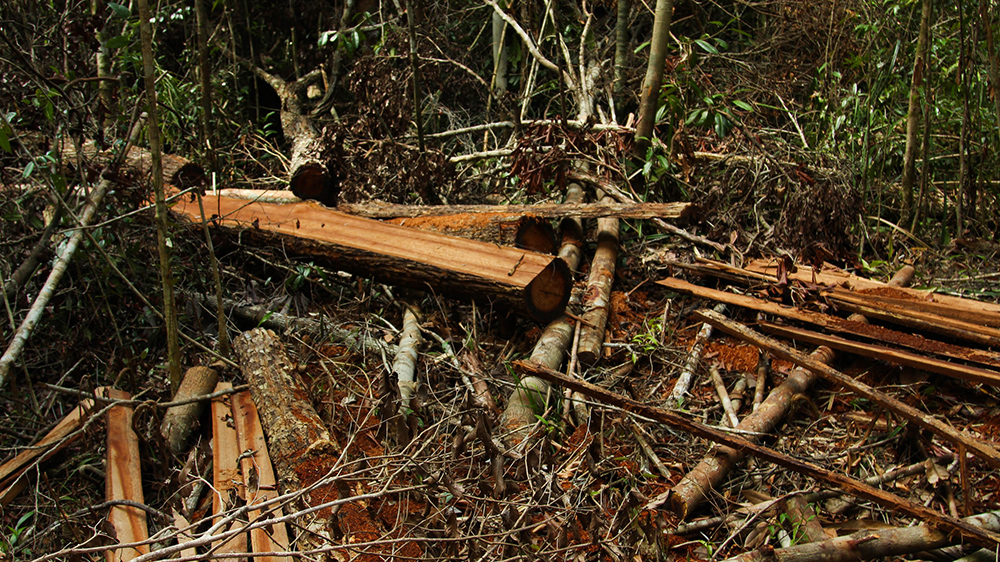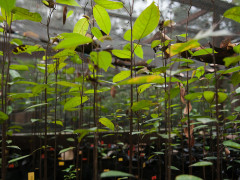The Peat Restoration Commitment in Concession in Riau is Being Questioned
By ZamzamiPeatland Restoration in Concession Areas in Jambi
Jambi is one of the 7 priority provinces for the restoration program of 2.67 million hectares of peatland. According to the indicative map of peat restoration, the total target area for restoration in Jambi is 200,772 hectares, consisting of 46,415 hectares of protected areas, 25,885 hectares of unlicensed cultivation areas, and 128,472 hectares of licensed cultivation areas. In practice, peat restoration in licensed cultivation areas is under the responsibility of the permit holders and supervised by the Peatland Restoration Agency (BRG).
The main problem in implementing this supervision is that there is no transparency regarding companies that have or have not carried out peat restoration. Of the total 2.67 million hectares in the restoration program, 1.78 million hectares are on licensed cultivation areas in 7 priority provinces.
According to the Deputy for Education, Dissemination, Participation, and Partnerships of BRG, Myrna A. Safitri, BRG can supervise peat restoration in oil palm plantation concession areas because they already have an agreement with the Directorate General of Plantation of the Ministry of Agriculture. Unfortunately, the same agreement has not been reached between BRG and the Ministry of Environment and Forestry. Myrna admits that BRG has not received supervision guidelines from the Ministry of Environment and Forestry, so they can’t carry out supervision optimally in forestry concession areas.
“We just started the supervision at the end of 2018 and we only prioritize the plantation sector. But BRG will strive to supervise and educate concession holders to jointly carry out peat restoration,” said Myrna.
In Jambi Province, BRG aims to supervise 38,954 hectares of oil palm plantation concession areas and 99,872 hectares of forestry concession 0areas.
Dicky Kurniawan, BRG's program driver (dinamisator) for Jambi region, said that so far BRG has only been able to supervise peat restoration in 11,950 hectares of licensed area, which includes concession areas belonging to several companies in the Sinarmas Agri Group, i.e. PT Kresna Duta Agroindo (KDA), PT Bahana Karya Semesta (BKS), and PT Primatama Kreasi Mas (PKM). These companies' working areas are within the Air Hitam-Tembesi Peat Hydrological Unit in Sarolangun District.
According to Dicky, BRG is supervising how the companies build and maintain the infrastructure.
“BRG cannot impose sanctions. We only recommend them to repair or complete it. There are some problematic canal blocks that we recommend to repair immediately," he said.
Dicky mentioned that there are 60 company permits located on Jambi peatlands, consisting of 52 oil palm plantation companies and 8 industrial plantation forest (HTI) concession holders, i.e. PT Wira Karya Sakti (WKS), PT Rimba Hutani Mas (RHM), PT Dyera Hutan Lestari, and PT Putra Duta.
The Ministry of Environment and Forestry reported that up to 2018, they have succeeded in fostering and overseeing the restoration of 3,119,742 hectares of peatlands throughout Indonesia by wetting. From this total, 884,540 hectares of peatland ecosystem were restored in plantation areas, 2,226,780 hectares in industrial plantation forests (HTI), and 8,382 hectares on community lands. However, the report did not mention the names of the plantation and HTI companies.
Rudiansyah, Executive Director of Walhi Jambi, regretted that the ministry seemed to cover up data on the Business Work Plans (RKU) and Annual Work Plans (RKT) of permit-holding companies in forestry concession areas. As a result, peat restoration efforts, especially in HTI concession areas, are not monitored by the public and thus open the risk of compromise between the ministry and the companies.
"Why does the Ministry of Environment and Forestry still hold back the data? There must be concerns from the companies about the area permitted for production becomes smaller compared to the restoration area," said Rudiansyah.
Another important problem that hinders restoration in concession areas is still related to data, which is the overlapping data on licensed and unlicensed cultivation areas or protected areas. According to the indicative map, restoration on licensed cultivation areas in Jambi covers an area of 128,472 hectares. However, after verification, BRG found that there are 10,354 hectares of land located in protected forest areas that overlap with the companies' concession areas. As the name suggests, protected areas are areas that should be protected and cannot be exploited.
Because of the overlap, BRG included an additional target concession area for supervision in Jambi to a total of 138,826 hectares.
Asmadi Saad, an academic at the University of Jambi, believed that another factor that caused nonoptimal supervision of peat restoration in concession areas in Jambi Province was the lack of coordination and cooperation between the central and the regional governments as well as between local agencies. Asmadi suggested that BRG follow up on the supervision results every three or six months to check the repairs and implementations done by the related companies.
"Especially during the dry season, we need to check again whether the wetting infrastructure is working well because wetting peatlands is very important to prevent fires during the dry season," said Asmadi.
The unsustainable use of land, especially peatland, by the companies will have a major impact on the environment. The canals built by the companies have drastically reduced the water stored in the peat. As a result, peatlands become easily flooded in the rainy season and easily burned in the dry season.




